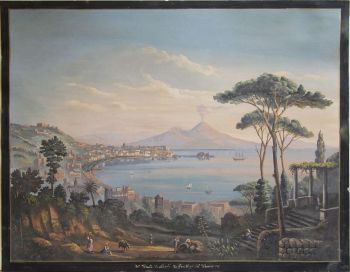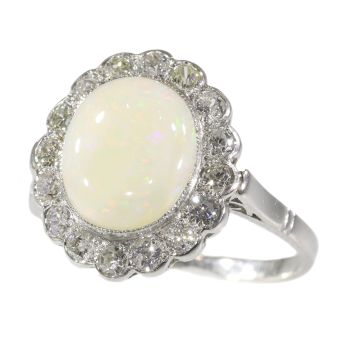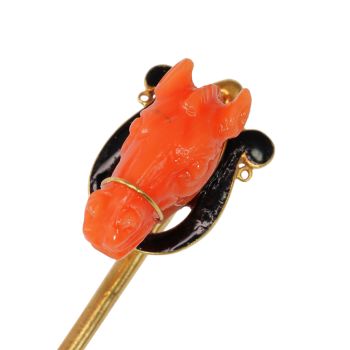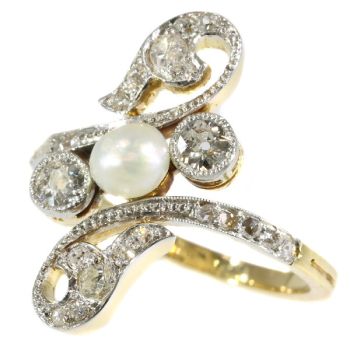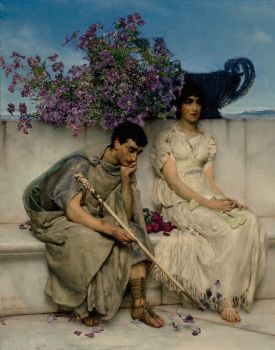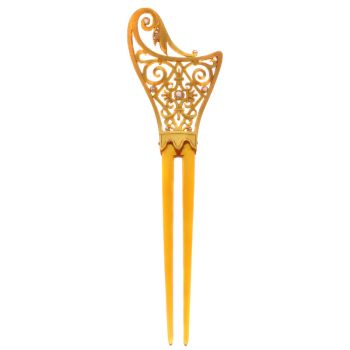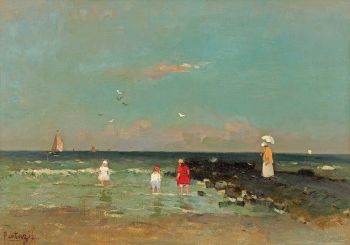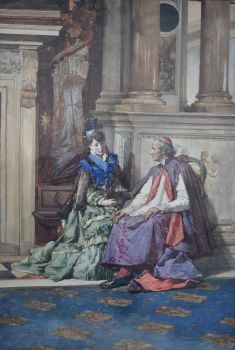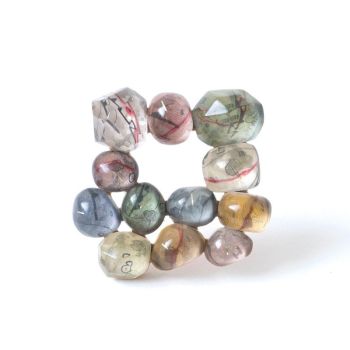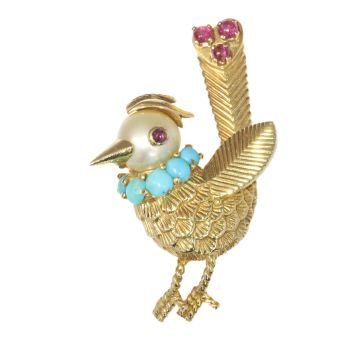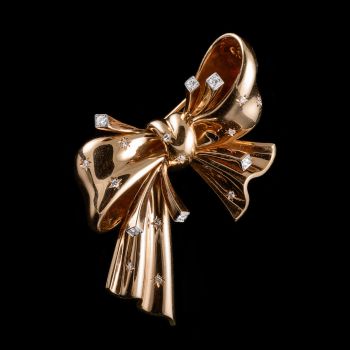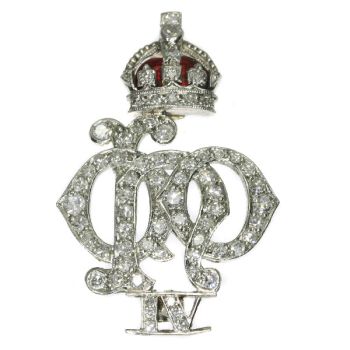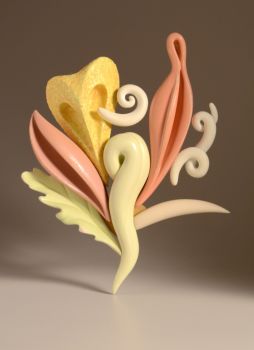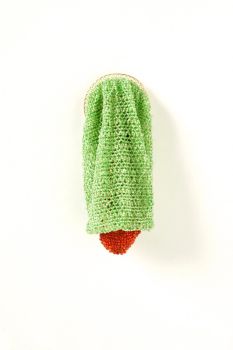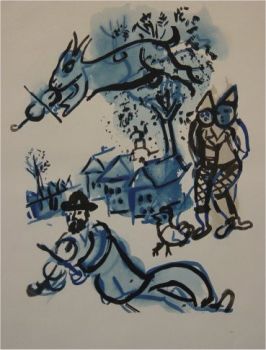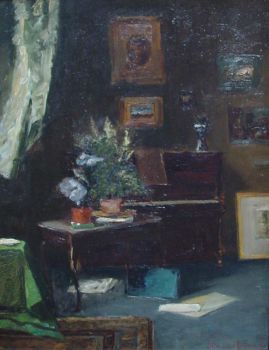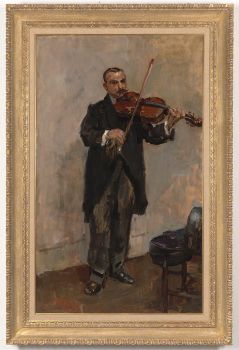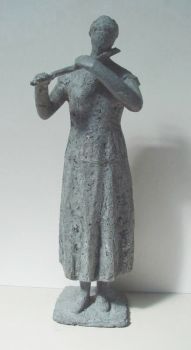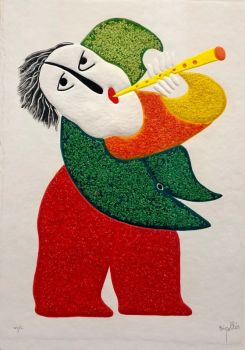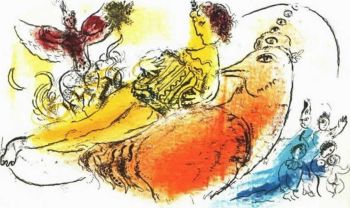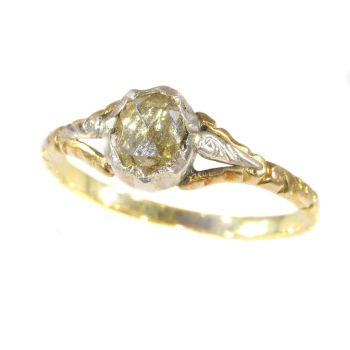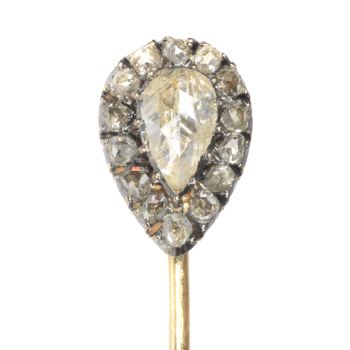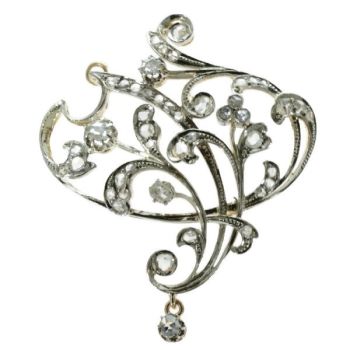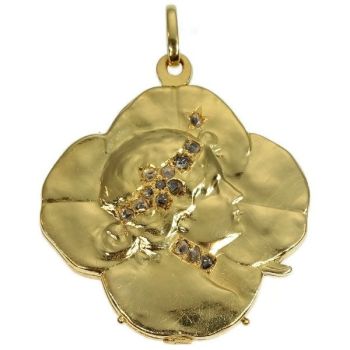Broche russe antique mandoline ou domra avec diamants taillés en rose et émail 1910
Artiste Inconnu
Adin Fine Antique Jewellery
- Sur l'oeuvre d'art
94 rose cut diamonds all encrusted in silver carry you through this 14K red gold Russian Victorian brooch, starting from the stringed musical instrument's head with miniature tuning pegs and via the draping strap over to the body embellished with adiamond rim and blue enamelled inlay frills. Besides the diamond sound hole and bridge, it's the eight cabochon cut rubies in the nut and the bridge pins and the two seed pearls next to the chords that make this mandolin reach its crescendo.
Antique jewelry object group: brooch
Condition: excellent condition
- (more info on our condition scale)
Country of origin: Russia (Transcaucasia)
Style: Victorian - Victorian decorative arts refers to the style of decorative arts during the Victorian era. The Victorian era is known for its eclectic revival and interpretation of historic styles and the introduction of cross-cultural influences from themiddle east and Asia in furniture, fittings, and Interior decoration. Victorian design is widely viewed as having indulged in a regrettable excess of ornament. The Arts and Crafts movement, the aesthetic movement, Anglo-Japanese style, and Art Nouveaustyle have their beginnings in the late Victorian era.
- See also: Victorianor more info on styles
Period: ca. 1910
- (events and facts in 1910)
Source of inspiration: Musical instruments
Theme: Mandoline, or perhaps more likely the four string domra.
Material: 14k red gold and silver, see also: The silver on gold technique
- (more info on precious metals)
Technique: Enamelling is an old and widely-adopted technology. The ancient Egyptians applied enamels to pottery and stone objects. The ancient Greeks, Celts, Russians, and Chinese also used enameling processes on metal objects. Enamel is the colorful result offusing powdered glass to a substrate by firing, usually between 750 and 850 degrees Celsius. The powder melts and flows and hardens to a smooth, durable vitreous coating on metal, glass or ceramic. According to some sources, the word enamel comes fromthe High German word smelzan (to smelt) via the Old French esmail. Used as a noun, "an enamel" is a usually small decorative object, coated with enamel coating, such as a champlevé or a cloisonné (different techniques).
Diamonds:94 rose cut diamonds. We do not have the weight of the diamonds which is normal in our trade when it comes to rose cuts.
Precious stones: eight cabochon cut ruby. We did not check if the ruby is lab produced or not as this information has no influence on the value of this jewel. Natural rubies and lab produced rubies were both used in this era, rather more for their effect than for their intrinsic value.and two seed pearls
- (more info on precious stones)
Birthstones: Diamond is the birthstone (or month stone) for April, ruby for July and pearl for June.
- (more info on birthstones)
Hallmarks: Pre-revolution Russian hallmarks for 14K gold. Hallmarked in Transcaucasia, known because of the letter 'O' in the hallmark. This hallmark was used between 1908 and the Russian Revolution in 1917. Furthermore we found a French control mark thatindicates that the piece has been imported to France....
If this piece could only talk... What amazing story would we hear.
- (more info on hallmarks)
Dimensions: Width 6,13 cm (2,41 inch)
Weight: 11,60 gram (7,46 dwt)
Reference Nº: 14185-0013
Copyright photography: Adin, fine antique jewelry
- Sur l'artiste
Il peut arriver qu'un artiste ou un créateur soit inconnu.
Certaines œuvres ne doivent pas être déterminées par qui elles sont faites ou elles sont faites par (un groupe d') artisans. Les exemples sont des statues de l'Antiquité, des meubles, des miroirs ou des signatures qui ne sont pas claires ou lisibles, mais aussi certaines œuvres ne sont pas signées du tout.
Vous pouvez également trouver la description suivante :
•"Attribué à …." A leur avis probablement une oeuvre de l'artiste, au moins en partie
•« Atelier de …. ou « Atelier de » À leur avis, une œuvre exécutée dans l'atelier ou l'atelier de l'artiste, éventuellement sous sa direction
•« Cercle de… ». A leur avis une oeuvre de la période de l'artiste témoignant de son influence, étroitement associée à l'artiste mais pas forcément son élève
•« Style de … ». ou "Suiveur de ...." Selon eux, une œuvre exécutée dans le style de l'artiste mais pas nécessairement par un élève ; peut être contemporain ou presque contemporain
•« Manière de… ». A leur avis une oeuvre dans le style de l'artiste mais d'une date plus tardive
•"Après …." A leur avis une copie (quelle qu'en soit la date) d'une oeuvre de l'artiste
•« Signé… », « Daté… ». ou « Inscrit » À leur avis, l'œuvre a été signée/datée/inscrite par l'artiste. L'ajout d'un point d'interrogation indique un élément de doute
• "Avec signature ….", "Avec date ….", "Avec inscription …." ou "Porte signature/date/inscription" à leur avis la signature/date/inscription a été ajoutée par quelqu'un d'autre que l'artiste
Êtes-vous intéressé par l'achat de cette oeuvre?
Artwork details
Related artworks
- 1 - 4 / 12
- 1 - 4 / 24
- 1 - 4 / 24
Carel Nicolaas Storm van 's Gravesande
My studio in Bruxelles1841 - 1924
Prix sur demandeKunsthandel Pygmalion
1 - 4 / 14- 1 - 4 / 24
- 1 - 4 / 12










